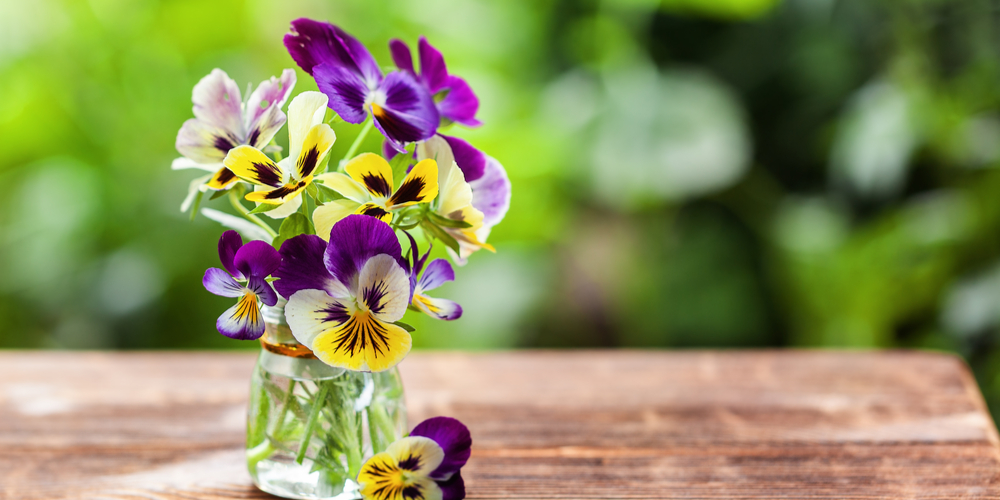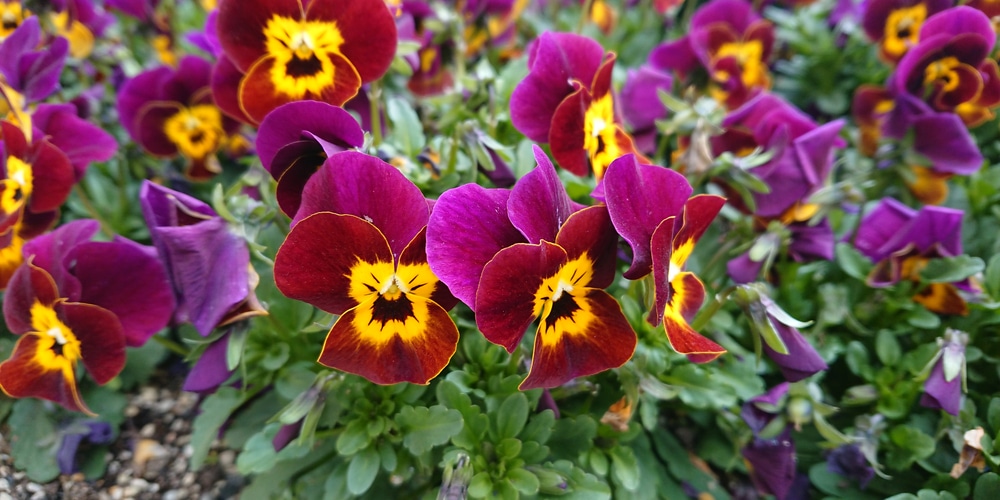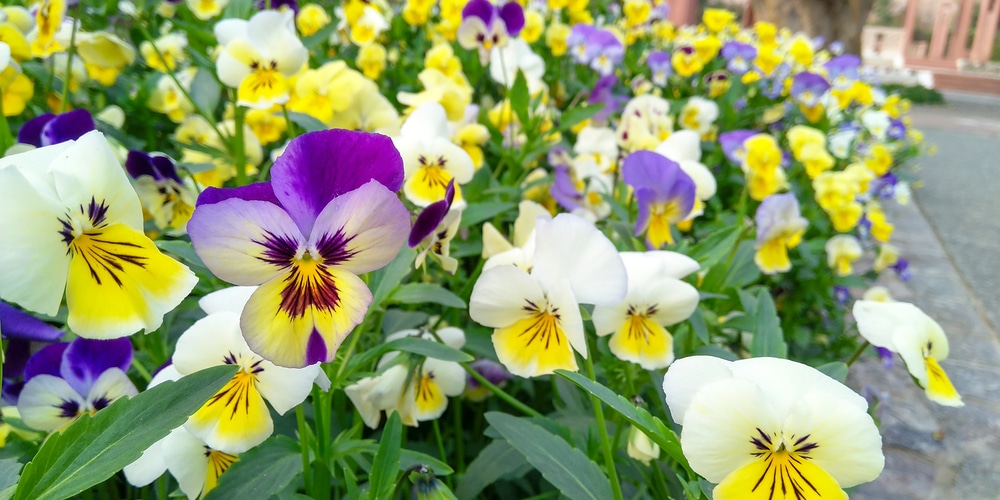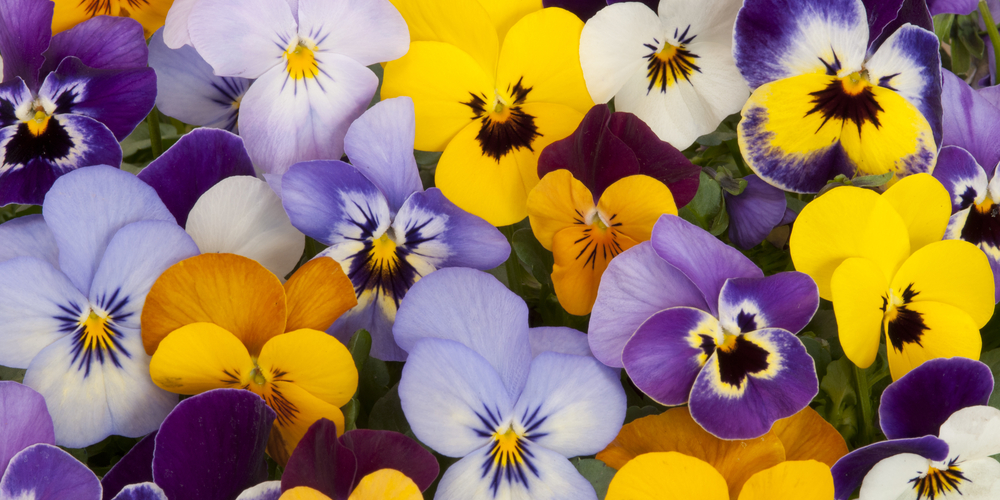Look no further than the pansy if you’re looking for a beautiful flower to add to your garden. Pansies are a Texas favorite, and for a good reason! They are hardy plants that can withstand various weather conditions, and they come in a wide variety of colors.
This blog post will discuss everything you need to know about growing pansies in Texas. We’ll cover everything from planting to care and maintenance. So if you’re ready to learn more about these lovely flowers, keep reading!
What Are Pansies, And Why Are They So Popular In Texas Gardens?

Pansies are a type of flowering plant part of the Viola genus. They are characterized by their large flowers, which come in various colors, including yellow, purple, red, and white. Pansies are relatively easy to grow and are popular among gardeners because they require little maintenance.
In addition, pansies are tolerant of both cold and heat, making them well-suited for regions with harsh winters or hot summers. Because of their versatility and ease of care, pansies have become one of the most popular types of flowers in Texas gardens.
Gardeners in Texas appreciate pansies for their ability to add color and life to a garden year-round.
Whether planted in the spring, summer, or fall, pansies bring cheerfulness to any garden that is hard to match. For gardeners who want to add a touch of color to their landscape without a lot of hassle, pansies are a perfect choice.
How Do You Plant Pansies In Your Garden Or Landscape Bedding Area For Best Results?
Pansies are one of the most popular flowers planted in gardens and landscapes. They are known for their vibrant colors and ability to bloom throughout the spring and summer. Because they are so easy to grow, pansies are an excellent choice for beginning gardeners.
However, a few things to keep in mind when planting pansies to ensure the best results. The first step is to select a location that receives full sun. Pansies will also do well in partial shade, but they will not bloom as heavily in these areas. Once you have selected the perfect spot, it is time to prepare the soil.
Pansies prefer well-drained soil that is high in organic matter. If your soil does not meet these requirements, you can improve it by adding compost or peat moss. Once the soil is prepared, you can plant your pansies. It is important to space them about six inches apart to have room to grow.
After planting, water your pansies deeply and keep the soil moist throughout the growing season. With a little care, your pansies will thrive and provide you with beautiful blooms all season long!
When Is The Best Time To Plant Pansies In Texas
Pansies are one of the first flowers to bloom in spring, and they can often be seen gracing gardens and yards across Texas. While pansies can be planted at any time of year, the best time to plant them is in the fall. This gives the plants a chance to establish themselves before the cold weather sets in.
Pansies are hardy flowers, but they will struggle if they are not given enough time to develop strong roots. Therefore, planting them in the fall ensures that they will be ready to provide color and beauty when spring arrives.
Additionally, pansies planted in the fall will often bloom earlier than those planted in other seasons. So if you’re looking for a head start on your spring gardening, Planting pansies in the fall is the way to go.
Which Varieties Of Pansies Do Well In Texas?
Pansies are one of the most popular flowers in Texas. They come in a wide variety of colors and can brighten up any garden. But with so many different varieties of pansies available, it can be hard to know which ones will do best in Texas.
One of the most important things to consider when choosing pansies is the climate. Texas has a warm climate, so choosing pansies that can tolerate the heat is important. Good choices include: ‘Apricot Blush,’ ‘Burgundy Blotch,’ and ‘Peachy Orange.’ These varieties have strong root systems that help them thrive in hot weather.
It is also important to choose pansies that are resistant to disease. Unfortunately, some types of pansies are prone to disease, which can quickly kill them off. However, some varieties are more resistant than others. ‘Majestic Giants’ is a good choice for Texas gardens. These varieties are less likely to get sick, making them a better investment for your garden.
Finally, you will want to choose pansies that are compatible with the other plants in your garden. Some pansies can be aggressive and spread quickly, crowding out other plants. However, some varieties are more well-behaved.
Pansies in Texas: Conclusion
Pansies are beautiful and easy-to-grow flowers that can add color to any garden. When choosing pansies for your Texas garden, it is important to consider the climate and the other plants in your garden. You can find the perfect pansies for your yard with a little research!
Related Article: How Often Should I Water Pansies


